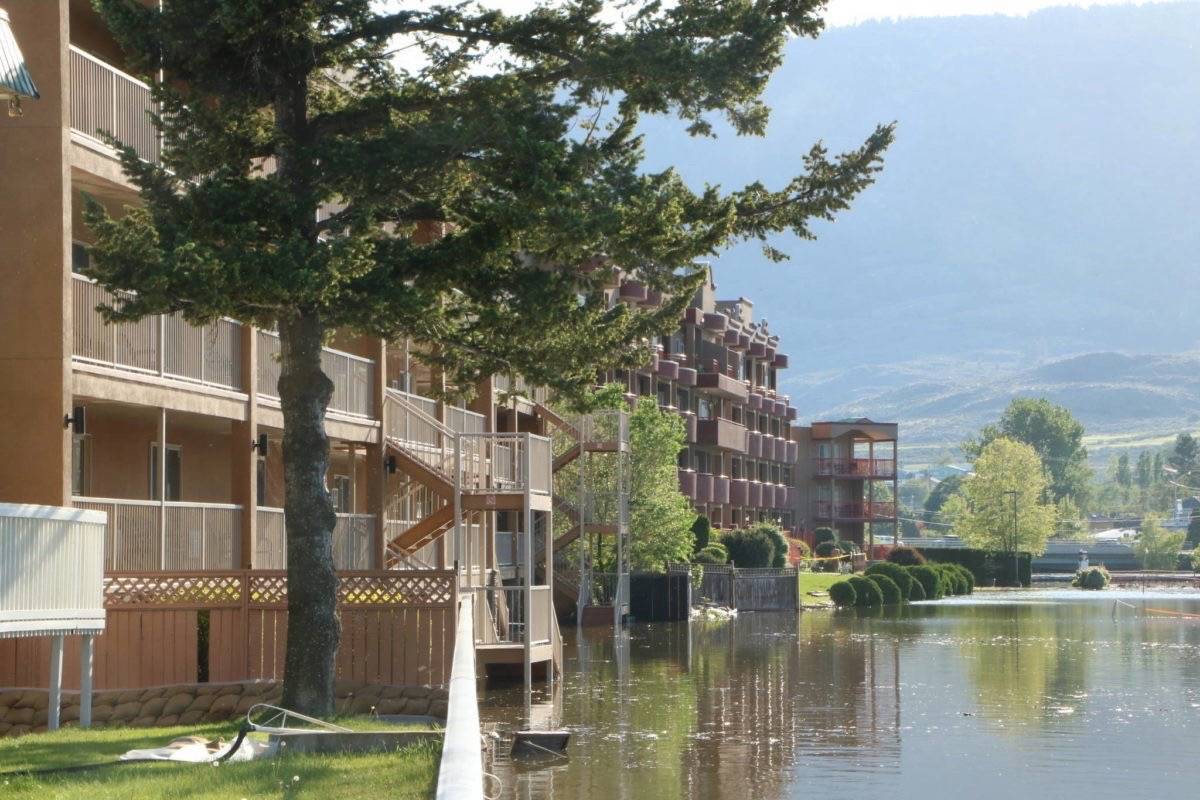
The Okanagan is one of the most prone regions in Canada for a major flooding event this spring, according to the Insurance Bureau of Canada (IBC).
The reasons for that outlook are a higher than normal snowpack combined with a relatively mild winter, which so far has produced more winter precipitation than normal, all factors that point to a major spring flooding event.
“Right now we have watched lower than average snowpack levels in eastern Canada and across the Maritimes, while they been higher than normal in B.C., ” said Craig Stewart, vice-president, federal affairs, for IBC.
“So our attention right now is watching B.C. to see what happens.”
IBC released a statement last week saying severe weather has caused $2.4 billion in insured damage across Canada in 2020.
Some of the major weather events contributing to that total occurred in Alberta due to flooding and a hail storm, rainfall in B.C. and significant storms in Ontario and Quebec.
Stewart said the main culprit is climate change, combined with a lack of a national plan to protect Canadians from floods, wildfires, windstorms and hail.
He said the damages incurred by the insurance industry are ultimately passed back to taxpayers in higher insurance rates.
“The reason the insurance industry exists is to provide fiscal security for businesses and property owners and we are capitalized efficiently to handle severe weather storms,” said Stewart.
“But obviously the trend in Canada of multi-billion annual losses does cause stress on the industry. Insurers use reinsurers (companies that provide financial protection to insurance companies) so the rates we pay go up…so the increased costs do get passed on.”
While it may be pretty clear to some and a hoax to others, Stewart said climate change is “absolutely clear” to the insurance industry, which in Canada is pushing the federal government to develop a national strategy to mitigate potential severe weather storm damages.
Stewart said the feds have committed to establishing a Task Force on High Risk Residential Flood Insurance and Strategic Relocation, adding the insurance industry has a seat the table for that task force.
“The first meeting is in February and we are hopeful to see recommendations come from that task force by the spring of 2022,” Stewart said.
He said what the insurance industry wants addressed in those recommendation includes funding for infrastructure mitigation projects; greater protection measures of natural wetlands which can absorb precipation and spring runoff; tree replanting of clear-cut areas to better hold back water and snowmelt. With less funding assistance emphasis on furnace energy efficiency retrofits for homes and more emphasis on wildfire and flooding prevention measures; and relocating homeowners living in worst flooding situations.
He said government needs to start thinking about storm disaster prevention rather than just reacting to damaging weather events.
“We need to do a better job of addressing the root causes behind the damage being caused. In Canada we are traditionally not good at preparing for disasters, at preparing for a pandemic. For example, there are parts of the country, like B.C., which are better prepared for earthquakes than others, such as Quebec.